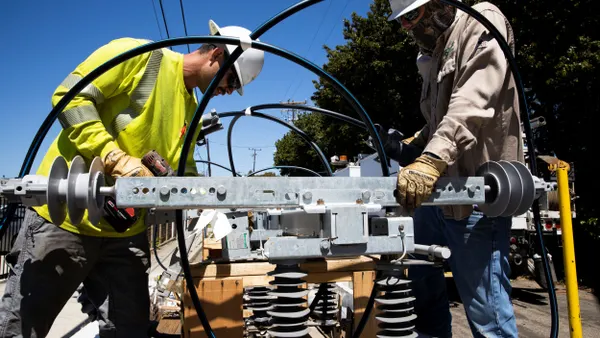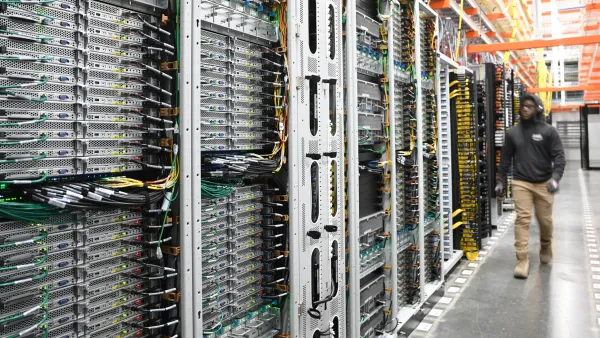With green hydrogen production in its infancy, the world is watching as projects come online and production forecasts are put to the test. Recently, news surfaced that Sinopec’s 260MW Kuqa facility in China, one of the world’s largest green hydrogen production facilities, is unable to manufacture hydrogen at previously predicted quantities. All three of the electrolyzers (supplied by different manufacturers) are currently hampered by safety issues related to renewable-energy fluctuations. These safety issues are causing the electrolyzers to shut down frequently, reducing production efficiency and potentially increasing wear and tear on equipment.
Notably, batteries don’t appear to be a part of the Kuqa facility’s configuration. Had batteries been included, it’s possible some of these safety issues could have been avoided. Pairing solar PV energy with battery storage offers solutions to several of the problems identified at the Kuqa facility, and is an approach recommended for green hydrogen production in this study.
During our own analysis, PXiSE Energy Solutions found that solar PV power paired directly with an electrolyzer could be made to work through conservative solar scheduling and curtailment practices. However, this was at the expense of wasted power which could otherwise be utilized if a battery energy storage system (BESS) was in place. Modeling indicated that power smoothing capabilities, which would kick in whenever solar PV intermittency was detected, would enable the electrolyzer to start up as soon as (or slightly before) solar PV production began, keep the electrolyzer running through variable solar PV production times, and would result in a 20% improvement in usable MWh over a system without a BESS. Furthermore, during highly variable solar production, a 70% improvement in usable MWh could be achieved over a system without a BESS due to avoided power dips and shutdowns when solar production nosedives.
In summary, including a BESS enabled:
- The electrolyzer to start when solar PV production begins
- Variable solar PV production to be firmed, resulting in a consistent electrolyzer power schedule
- A reduction in the number of electrolyzer start/stops
- A reduction in solar curtailment
- An increase in power availability leading to improved hydrogen production uptime
Additionally, including a BESS was deemed beneficial for grid-connected configurations as the BESS could help with the economics of power import/export from and to the grid by timing such transactions when they’re most beneficial to the plant in relation to electricity pricing structures.

In the simulated analysis depicted in the graph above, fluctuating solar PV production is matched by an inverse power schedule of the BESS. As solar PV production drops, the BESS dispatches power to maintain the electrolyzer power schedule within its operating power constraints. The electrolyzer runs at its maximum possible output the entire time solar PV power is available. Since there is no solar curtailment, all available solar power is used to feed the hydrogen production process and no solar power is wasted.

In the same simulated analysis conducted without use of a BESS, the electrolyzer power profile is diminished due to solar PV power dropping below the minimum operating power constraints, requiring the electrolyzer to shut down. Even though solar PV power rebounds, the electrolyzer power profile cannot follow it immediately due to cold start ramp rates and minimum off time between shut down and startup.
Implications related to the Kuqa facility
At the Kuqa facility in China, one of the issues is that the electrolyzers fail when they are powered at only 30%. As a fix, the facility is planning to shut down electrolyzers when power supplies are unable to meet at least 50% of all three of the electrolyzers’ power requirements. While that may avert safety failures, the increased frequency of start/stops on the systems could increase the wear and tear on the units, shortening their lifespan or increasing their maintenance needs. Plus, there’s an obvious loss of production while the system is shut down. As noted in the analysis above, battery storage could help reduce the quantity of start/stops by firming power when solar PV production dips below the 50% requirement.
Without a battery to boost power supply when solar PV production dips, Kuqa must rely on importing wind power from the grid if they want to avoid shutdowns related to insufficient power supply. But buying wind power from the grid will increase hydrogen production costs, so it is likely that tactic will be avoided if possible. Here again, a battery could help by maximizing PV self-consumption by firming the power within the electrolyzers’ operating constraints, thus maintaining full production when the sun is shining and avoiding curtailment and unnecessary process shutdowns due to solar intermittency.
Oftentimes, the decision to not install a BESS is driven by a belief that the payback or return-on-investment (ROI) isn’t there, but understanding the true value of a BESS for green hydrogen production is a complex calculation that needs to include the added economics of increased hydrogen production from on-site renewables, more consistent production uptime, and the avoided costs of importing energy. When these benefits are combined, it may turn out that the cost of the BESS is the wisest investment when it comes to improving the economics of the green hydrogen plant.
PXiSE Energy Solutions offers a controller that manages the power dispatch of all your renewable and battery assets for efficient green hydrogen production. Read more.










